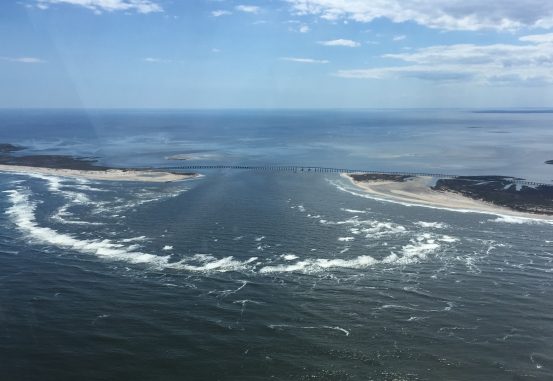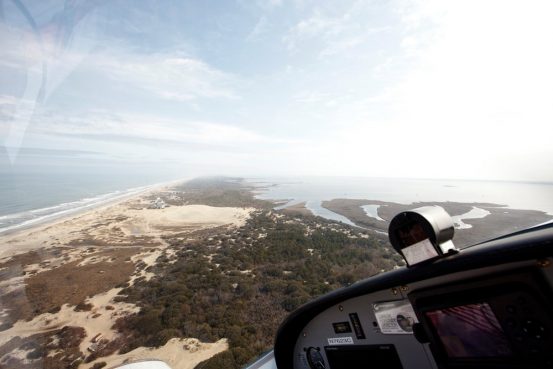People tend to take for granted the history of the communities in which they live or visit, and the Outer Banks is no exception to this observation. Most know about major local history events like the story of the Wright Brothers and The Lost Colony, but often lesser known facts can prove to be quite interesting in understanding the history of a region. Here are five facts you may not know about our area:
The Village of Duck is one of the oldest towns on the Outer Banks.
There are no records that indicate when the first residents came to live in Duck, but by the early 19th century there was a permanent settlement—and the evidence tells a sad tale of difficult lives and early deaths.
On the south end of the village, there is a small family cemetery on Settler’s Lane. The earliest gravestones are for infants, all of them dying before 1820 and none of them living past their second birthday.
A ship caught in hurricane conditions results in the naming of Oregon Inlet.
On September 7, 1846, a hurricane of extraordinary power was lashing the Outer Banks causing tremendous over wash on the beach and dunes south of Nags Head. Meanwhile in the Atlantic Ocean, the coastal trading ship, Oregon, seems doomed against the hurricane’s path. According to legend, a gigantic wave lifted the ship and deposited it onto a sandbar.

When the storm system passed, the crew realized they were in the Pamlico Sound, and directly in front of the ship was an inlet that didn’t exist on their charts. As the first vessel to sail through the inlet, it was named in the ship’s honor.

A Corolla hamlet is buried by migrating sand.
The village of Corolla is the center of life on the Currituck Banks and the only true town in the area. Carova, on the Virginia state line, has no businesses and is comprised of a fire station and a sprinkling of homes. However, at one time there was a small and thriving hamlet called Seagull located about 15 miles north of Corolla. There were at most 120 residents, but it was also home to a Life Saving Service Station—the predecessor to the Coast Guard—a one room schoolhouse and a post office. Nestled at the base of Penny’s Hill, the town is now completely buried, a result of the inexorable southern migration of the dune.
The original Dare County Courthouse was a state of the art building.
Completed in 1904 by the F. Smith Fireproof Company, the historic Dare County Courthouse has been a centerpiece of downtown Manteo for 110 years. At a time when fire protection was spotty and often unprofessional, having an all brick building that would not easily burn was considered essential.
The building is remarkably well built. Over the years, the only damage to the structure was the loss of the bell and belfry tower in a 1933 hurricane. Noting that the roof had always leaked, and not having the repair funds, County Commissioners declined to replace the belfry.
In September of 2014 the Manteo Preservation Trust completed construction to replace the belfry with the original bell.
Franklin Delano Roosevelt attended The Lost Colony.
About six weeks after its premier performance, President Franklin Roosevelt came to the Outer Banks to see the play for himself. The attendance date was August 18, 1937, which coincided with the 350th anniversary of Virginia Dare’s birth.
There was considerable political symbolism in his visit since the Civilian Conservation Corps (CCC) built Waterside Theatre and many of the actors were part of the Federal Actors Project, both of which were pet projects of the President.
